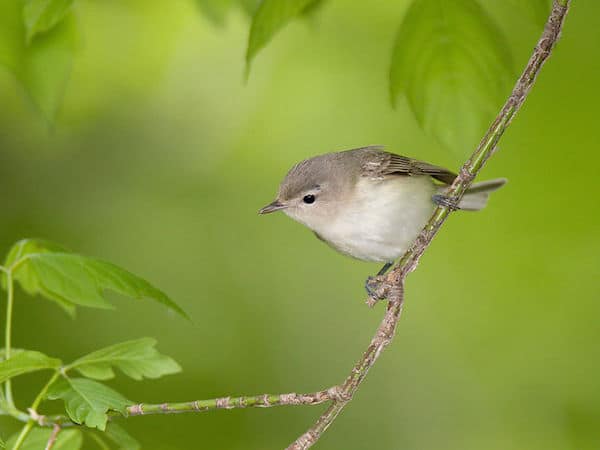Look for
Clark’s nutcracker is a bird with a long, straight, black bill that narrows into a sharp tip. Its body and head are a solid pale gray and its wings are black with white patches on the lower half of the secondary feathers. Its tail is black down the center with thick white stripes on either side. Its legs are black and it sometimes has a smeared ring of white around its eyes.
Listen for
Clark’s nutcracker doesn’t have a single, definitive song but has a variety of different calls. Most commonly is a guttural, metallic khraaaak sound that it uses to contact other Clark’s nutcrackers.
Find it
Clark’s nutcracker lives year-round in high elevation areas in the western United States and southwestern Canada. Its range stretches across parts of British Columbia and Alberta south into southern California and as east into New Mexico and Colorado. Clark’s nutcrackers live in mountainous coniferous forests, even near the tree line. In fall, it sometimes moves to lower-altitude coniferous forests with high concentration of seeds.
Diet
Clark’s nutcracker relies on pine seeds as its main source of sustenance year-round. It uses its bill to crack open pinecones to gather seeds that it eats or stores for later. In a single season, the Clark’s nutcracker can cache up to 30,000 seeds that it consumes throughout the winter months and sometimes into early spring.
It has an impressive memory and can accurately remember where the caches are located for at least six months. Because it doesn’t recover all the seeds it stores, many sprout and grow in those spots. Additionally, Clark’s nutcrackers will sometimes feed on insects, berries, and small vertebrates.
Nesting Behavior
Clark’s nutcracker builds its nest near its seed caches in the horizontal outer branches of coniferous trees, including pines, spruces, and firs. Both sexes work together to build the cup-shaped nest using grass, bark, pine needle, and wood pulp.
They also build a platform made of twigs and bark to place under the cup to secure it into place among the twigs and adjacent branches. The female lays two to six eggs that are pale green with brown or gray speckling. Both parents incubate the eggs for 16-18 days before hatching. Both parents feed the young before they leave the nest after 18-21 days.
WOW!
The Clark’s nutcracker can carry up to 150 seeds in a throat pouch underneath its tongue and buries them under soil in underground caches.




